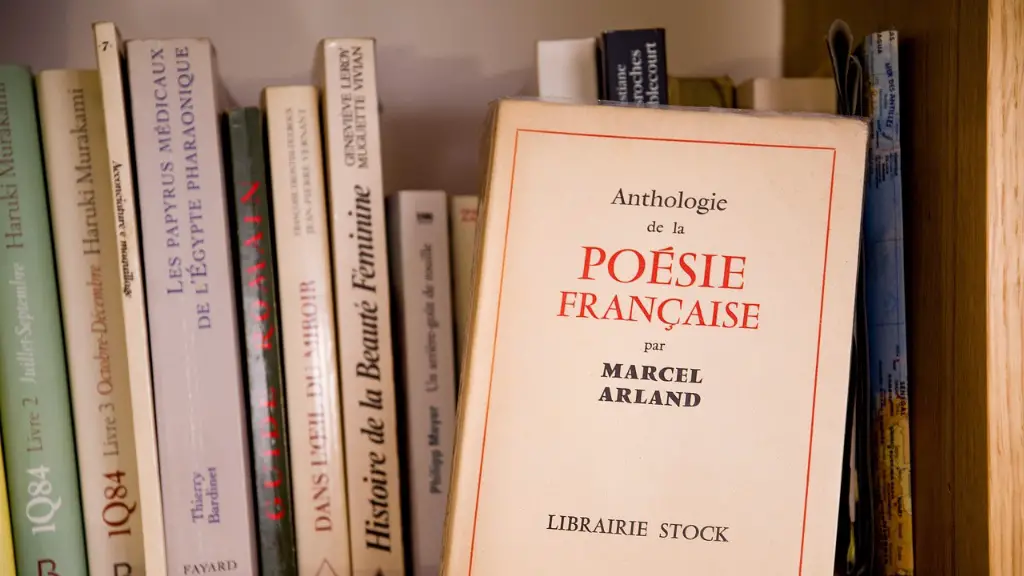What is a Pentameter in Poetry?
Pentameter is a poetic meter that consists of stressed and unstressed syllables arranged in five metrical feet. Most commonly, it is referred to as iambic pentameter, which is iambic rhythm consisting of ten syllables in each line. Iambic pentameter is the most common type of meter used in traditional English poetry, and has a long and exciting history that dates back centuries.
The term “pentameter” comes from the Greek words for “five” (pempti) and “measure” (metron). In ancient Greek and Latin texts, a majority of the lines were composed in this meter. This type of meter was also popular in the English Renaissance period, with the works of William Shakespeare and Edmund Spenser, among many others.
The structure of a pentameter line is traditionally composed of two halves, each with five syllables that alternate between stressed and unstressed. This creates a five foot pattern, with a weak syllable following a strong syllable, such as “daDUM”. It’s important to note that not every syllable must be only one or the other; in creative ways, words can be played with to add variation and enrich a poetic work.
When writing a poem in pentameter, it is essential to consider the dynamics of each metrical foot. The size of each metrical foot will affect the volume, rhythm and pace of the poem. The speed of a poem is determined by the number of syllables within each foot; while the volume is largely dependent on the placement of the stresses in the line.
For poets, understanding and using pentameter can be beneficial in communicating their stories. It is important to note, though, that not all poems need to be written metrically; some may flow better without this structure. It would be best to experiment with different types of meters and decide which ones work best for the poem.
Pentameter is widely used in English poetry for its power to convey emotion, which is often not achieved when ordinary language is used. By attempting to write in this meter, poets are able to express the feelings that words alone cannot. Through the rhythmic patterns of pentameter, poets use language to manipulate meaning and emphasize specific parts of the poem.
Structure of a Pentameter Line
A pentameter line typically consists of five feet, with each foot containing two syllables. The traditional form of this line is iambic pentameter and follows the structure of one unstressed syllable followed by a stressed syllable. In other words, the first syllable of each foot must be unstressed and the second syllable must be stressed: “daDUM”. Although this is the most common structure, there are many other variations that can also be used.
When writing a poem in pentameter, it is important to consider the size, speed and volume of each foot. The size refers to the number of syllables within the foot. The speed of the poem is determined by the length of these feet; a short foot creates a slow-paced poem, and a longer foot creates a quicker-paced poem. The volume is largely dependent on the placement of the stresses in the line; a line with a majority of stressed syllables will be louder and bolder than one with more unstressed syllables.
By using the structure of a pentameter line, poets are able to achieve a sense of rhythm and structure that would not be achieved with ordinary language. By employing this technique, writers are able to manipulate the lines of their poem and emphasize certain parts of it that are more meaningful.
Examples of Pentameter
One of the most famous examples of pentameter is from William Shakespeare’s Romeo and Juliet: “But soft! What light, through yonder window breaks?” This line is written in iambic pentameter, with each foot containing one unstressed and one stressed syllable: “But soft!/ What light,/ through yon/der win/dow breaks?”
Another example of pentameter can be found in Robert Frost’s “The Road Not Taken”: “Two roads diverged in a yellow wood.” In this line, Frost employs a trochaic pentameter, which is the opposite of iambic and has a stressed syllable followed by an unstressed syllable. The feet in this line are: “Two roads/di verged/in a/ yel low/wood.”
Finally, another example of pentameter is from Edgar Allan Poe’s “The Raven”: “Once upon a midnight dreary.” This line is an example of anapest pentameter, which has two unstressed syllables followed by a stressed syllable. In this line, the feet are: “Once u/pon a/ mid night/dre a/ry.”
The Benefits of Pentameter
Pentameter has a number of benefits for poets. It can be used to convey deeper emotions, feelings, and thoughts that cannot be expressed with ordinary language. Through the rhythm and structure of pentameter, poets are able to manipulate the lines of their poem and emphasize certain parts of it. Additionally, understanding and using pentameter can be beneficial to a poet’s work by creating a sense of unity and harmony.
When writing in pentameter, it is important to keep in mind the size, speed, and volume of each foot. This will help to control the emotions of the poem and create a sense of rhythm and structure. Additionally, it is important to consider the dynamics of each foot and how it can be used to enhance the poem. By understanding and employing the structure of pentameter, poets are able to craft beautiful and expressive works.
Historical Significance of Pentameter
Pentameter has been used in various forms of literature throughout history. Finding its earliest roots in ancient Greek and Roman poetry, it has been used in various versions in languages such as French, German, and Italian throughout time. In English poetry, pentameter was popularized in the late 16th century, with works by William Shakespeare, Edmund Spenser, and other prominent figures.
Since then, many poets have continued to use this type of meter to create powerful and expressive works. This includes well-known poets such as John Milton, Alexander Pope, and Percy Shelley. Pentameter continues to be used in English poetry and is widely recognized for its ability to create a sense of rhythm and structure that is difficult to obtain with ordinary language.
The Future of Pentameter
As poetry continues to evolve, we are starting to see a departure from traditional forms of English poetry. This can be seen in modern poets, who are beginning to experiment with different forms of meter and structure. This experimentation has lead to a wider variety of structures being used, including those outside of the traditional pentameter.
Despite this experimentation, the tradition of using pentameter in English poetry will remain strong. Its influence and legacy will continue to shape the way in which poetry is composed and written. And as poets continue to experiment with this type of meter, they will create beautiful and expressive works that will stand the test of time.




